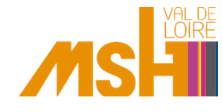Human interaction and Data Science
Scientific director: Isabelle Rabaud (LEO), Jean-Yves Ramel (LIFAT), Emmanuel Schang (LLL)
Research field 2024-2028
Observation
One of the current problems, both in SHS and in SPI, is the profusion of data and corpora. These corpora and their analysis are for the moment often thought of in a mono-disciplinary way and the data sciences are only mobilized at the time of their treatment. This questions the relevance of the analyses of the studied phenomena and the lack of creativity in the protocols and models developed or exploited.
Moreover, research in data science and AI has led to the emergence of numerous tools, which are too often entirely automatic and do not integrate the human dimension, whereas this type of approach should be interdisciplinary by nature.
Objectives
- Promote multidisciplinary interactions and co-design as early as possible in the process, i.e., from the definition of specifications, experimental protocols, and then during the development of models until the interpretation of results
- Develop a reflection on the deontology, ethics and use of data: for example, for greater reusability, describe the processes of data preparation and model construction, using standard formal vocabularies; this can also allow for an evaluation of the tools deployed, and allow for an efficient search among past experiences for those that could be reused (FAIR principles).
Example of concrete initiatives that can be used as support
In the Centre-Val de Loire Region, data sciences have already been and are still being used in a wide variety of fields of research in social and human sciences: in economics, sociology, history, archaeology, geography, linguistics, education and training sciences, and psychology. The following elements are likely to consolidate and enrich the research field:
- Semantic web group MSH Val de Loire/Huma-Num
- Various projects of Qualipsy that consider the comparison of deep learning models with more conventionally used statistical models (LabCom QVTi: Quality of life integrated into the workplace, ANR Frida on the analysis of fantasies)
- Various projects carried out by the Laboratoire Archéologie et Territoires de CITERES (assistance in the recognition of ceramics, automatic recognition in LiDAR data) and at LLL (analysis of rare languages with small data sets, ANR CREAM, coreferences, intonation, APR-IA RAVIOLI project)
- Various projects in education science and economics (fraud detection, definition of credit scoring criteria, etc.)
- Strong links are to be established with the new axis Health in all its states of the MSH Val de Loire.
